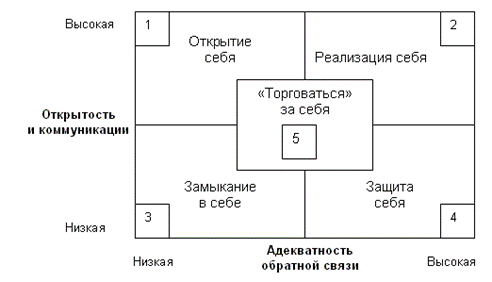home
 Management Management
 Management - Vikhansky OS Management - Vikhansky OS
|
Management - Vikhansky OS
1.4. Communication styles
Communication style - a method by which a person prefers to construct the interaction with other communications. There are many different styles that are used by people in interpersonal communication, .so well as many approaches to the definition of those styles. Knowledge of styles helps to determine how to behave and what to expect from the behavior associated with a particular style.
The basis of measurement of interpersonal communication can take these two variables, openness in communication and adequate feedback. The first involves measuring the degree of opening or the opening itself in communication for other in order to obtain a response from them, particularly their response showing how they perceive us our action. The second dimension shows the degree to which people share with others their thoughts and feelings about them. By building on this basis matrix, where the vertical will be delayed first measurement, and horizontally - the second, it is possible to distinguish five of interpersonal communication styles (Figure 9.4.).
Communication style in the first quadrant of individuals can be defined as the opening itself. This style is characterized by a high degree of openness of yourself to others, but a low level of feedback from the individuals using this style. Opening itself in this case it is measured in the range from intermediate to maximum. The individual goes for it, thereby concentrating the attention on itself, to cause a reaction of others to their behavior. Unfortunately, this style suffers from the fact that the reaction of others are often left without adequate response or feedback from its individual caller. Considering the reaction of others to their behavior to heart, using the style of the individual can be unbridled emotions, contributes little to the establishment of effective relations between the communicating parties.

Fig. 9.4. Communication styles
The communication style of the individual in the second quadrant is defined as the implementation itself and is characterized by a maximum openness and maximum feedback. Under ideal conditions, this style is desirable, but situational factors (policy organization, the difference in status, etc.) can induce the individual who owns this style, give it up.
Communication style in the third quadrant is characterized by closure in itself, ie, while low transparency and low levels of feedback. The individual in this case, as it isolates itself, not letting others know it. This style is often used "introverts" - people with a tendency to pay more your mind inward. Extreme in the manifestation of this style is associated with hiding their ideas, opinions, and feelings locations to others.
Communication style in the fourth quadrant is associated with the protection of themselves and, as can be seen from the matrix, characterized by a low level of transparency, but a high level of feedback. It is widely used in order to get to know others, or more properly evaluate them. Usually, individuals who use this style, few are open to others, but others like to discuss. They love to hear about themselves, but do not like to discuss their quality, especially bad, with others.
In the middle of the matrix placed individuals, to "sell" yourself, if others do the same. This style is called "trade for himself" and is characterized by moderate openness and feedback, share in the process of interpersonal communication.
It would be wrong to think that any one of these communication styles is the most desirable. However, the practice of effective communication indicates that the style in which the individual realizes himself, is more desirable and is used in more situations. Possession of such a style is a real advantage. In regard to the use of other styles it is important to understand the problems of effective feedback, umenie'raskryt themselves and the ability to listen to others.


Comments
Commenting, keep in mind that the content and the tone of your messages can hurt the feelings of real people, show respect and tolerance to his interlocutors, even if you do not share their opinion, your behavior in terms of freedom of speech and anonymity offered by the Internet, is changing not only virtual, but real world. All comments are hidden from the index, spam control.